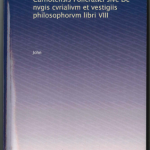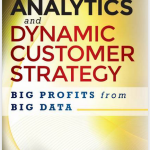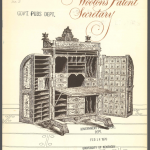Ioannis Saresberiensis episcopi Carnotensis Policratici sive De nugis curialium et vestigiis philosophorum libri VIII / recognovit et prolegomenis, apparatu critico, commentario, indicibus instruxit Clemens C.I. Webb. (OCLC #965502804)
The LC-PCC PS for RDA 1.11 includes specific instructions for RDA cataloging of Print on Demand (POD) Reproductions and Photocopies, which roughly say:
- Create one provider-neutral record for all potential print-on-demand copies of the title from any vendor.
- Most fields (including publication information) can more or less be cloned from the record for the original.
- Fixed field Form should be “r” to indicate print reproduction (but do not code “r” in DtSt).
- Include this note: 533 __ ǂa Print reproduction.
- Link back to the original manifestation with 775.
- If you wish to include information about your specific printing (ISBN, vendor), do so in 020, 037 respectively.
These rules have a fairly narrow scope, and should only be applied to facsimile reprints and reproductions; follow standard RDA rules for other types of reprints and new editions.


